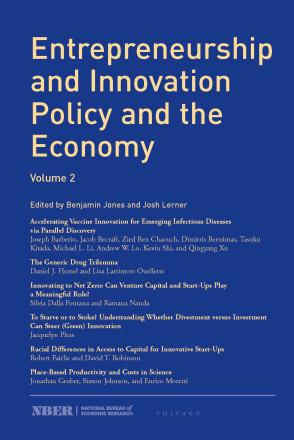The Generic Drug Trilemma

More than 90 percent of prescriptions dispensed in the United States each year are for off-patent drugs. Yet the bulk of scholarship on prescription drug policy focuses on patented drugs. Discussions of prescription drugs are typically oriented around the “innovation-access dilemma”—the tradeoff between stronger patent-based incentives for innovators and higher prices for purchasers of patented products. But for drugs in the “patent afterlife”—the period after patent protection and other forms of market exclusivity have expired—the innovation-access dilemma is not the fundamental policy tradeoff. Higher prices do not necessarily redound to the benefit of innovators, and price is not the only significant impediment to access: drug shortages—often triggered by safety concerns—also prevent patients from obtaining the medicines they need.
This chapter seeks to provide scholars and policymakers with a unifying framework for analyzing the variegated challenges of the pharmaceutical patent afterlife. We argue that the key tradeoffs in off-patent drug policy take the form of a trilemma—the three corners of which are price, quantity, and quality (i.e., safety and efficacy). The generally accepted goal of off-patent drug policy is to facilitate (1) low prices and (2) sufficient quantities of drugs that are (3) equivalent or similar to brand-name drugs approved by the Food and Drug Administration. But policies that improve outcomes along one or two of those dimensions typically entail some sacrifice along the third.
The trilemma framing yields several analytical payoffs. First, it sheds light on the root causes of puzzling problems plaguing some off-patent drug markets, such as sudden price spikes and persistent mismatches between supply and demand. Second, it draws attention to the non-innovation costs of recent drug pricing reform proposals—costs that are often overlooked amid the emphasis on innovation versus access. Finally, it motivates a search for solutions that can transcend the trilemma and optimize along all three dimensions of off-patent drug policy. That search brings us, full circle, back to innovation and access—the concerns that dominate discussions of pharmaceutical policy at the beginning of the patent life. But this time, the focus is on innovation—and, specifically, manufacturing innovation—in service of rather than in tension with access.
-
-
Copy CitationDaniel J. Hemel and Lisa L. Ouellette, Entrepreneurship and Innovation Policy and the Economy, volume 2 (University of Chicago Press, 2022), chap. 2, https://www.nber.org/books-and-chapters/entrepreneurship-and-innovation-policy-and-economy-volume-2/generic-drug-trilemma.Download Citation


